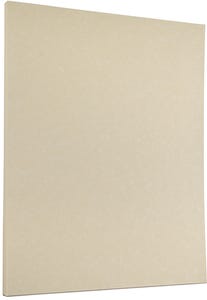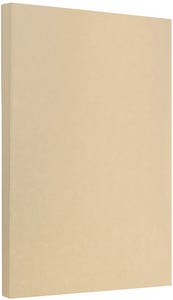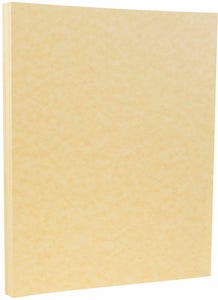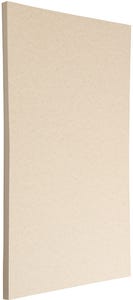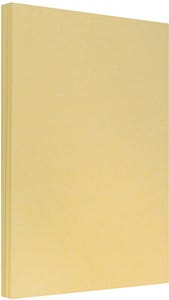Free ground shipping, excluding Alaska, Hawaii, and Canada
Archival Paper
Archival paper is essential for safeguarding historical documents and photographs, ensuring longevity and protection against deterioration, with key findings emphasizing the importance of acid-free composition, durability, protection against environmental factors, and proper storage techniques.
Archival Paper: Preserving History
Archival paper plays a vital role in safeguarding our historical heritage and cherished memories. Defined by its acid-free composition and durability, archival paper ensures the longevity and preservation of documents and photographs for future generations. This article explores the significance of archival paper, its evolution over time, and the benefits it offers in protecting against environmental factors. By understanding the characteristics and proper usage of archival paper, individuals can effectively preserve valuable records and images, maintaining their original quality and color over time.
Introduction to Archival Paper
Archival paper is a specialized type of paper that is crucial for preserving historical documents and photographs. Its importance lies in its ability to ensure the longevity and protection of these valuable materials against deterioration. Over time, archival paper has evolved to meet the increasing demands of preservation, incorporating features that make it ideal for long-term storage.
Definition and Importance of Archival Paper
Archival paper is designed to be durable and resistant to degradation, making it an essential choice for preserving important records and images. Its acid-free composition and pH neutrality prevent yellowing and deterioration, ensuring that documents remain intact for years to come. By using archival paper, institutions and individuals can safeguard their heritage and memories for future generations.
Brief History of Archival Paper
The concept of archival paper dates back to the need for long-lasting materials to store historical artifacts and documents. Over the years, advancements in papermaking technology have led to the development of high-quality archival paper that meets stringent preservation standards. Today, archival paper is widely used in museums, libraries, and archives to protect and conserve valuable collections.
Characteristics of Archival Paper
Archival paper possesses several key characteristics that make it ideal for preserving documents and photographs. These features ensure that the materials remain in pristine condition over time, resisting deterioration and maintaining their original quality.
Acid-Free Composition and pH Neutrality
One of the most important characteristics of archival paper is its acid-free composition and pH neutrality. This prevents the paper from deteriorating or causing damage to the documents stored on it. The absence of acidic compounds ensures that the paper remains stable and does not yellow or become brittle over time.
Lignin-Free and Buffered to Resist Deterioration
In addition to being acid-free, archival paper is also lignin-free and buffered to resist deterioration. Lignin is a natural component of wood pulp that can cause paper to become brittle and discolored. By removing lignin and adding buffering agents, archival paper maintains its strength and color stability, ensuring long-term preservation.
High Durability and Resistance to Yellowing and Fading
Archival paper is known for its high durability and resistance to yellowing and fading. This quality ensures that documents and photographs stored on archival paper retain their original appearance and color for extended periods. The paper's robust construction protects against physical damage and environmental factors that can degrade conventional paper.
Different Types and Weights of Archival Paper Available in the Market
There are various types and weights of archival paper available in the market to suit different preservation needs. From lightweight papers suitable for documents to heavyweight options for artwork and photographs, the range of archival paper products provides flexibility in choosing the right material for specific applications. Understanding the different types and weights can help individuals select the most appropriate archival paper for their preservation projects.
Who Should Consider Archival Paper?
Archival paper is ideal for individuals and institutions that prioritize the preservation of historical documents and photographs. Consider the following groups:
- Historians and researchers working with valuable archival materials.
- Artists and photographers looking to protect their creations for future generations.
- Families wanting to preserve important documents and photographs as heirlooms.
When to Utilize Archival Paper
Knowing when to use archival paper is crucial for effective preservation. Consider the following scenarios:
- When storing valuable historical documents susceptible to deterioration.
- When framing and displaying photographs that need long-term protection.
- When creating scrapbooks or albums to preserve memories for generations.
Examples of Archival Paper Applications
Archival paper finds diverse use cases in various settings. Explore the following examples:
Archiving Historical Records
- Museums use archival paper to preserve ancient manuscripts and historical documents.
- Libraries rely on archival paper to protect rare books and manuscripts from degradation.
Preserving Family Memories
- Individuals use archival paper to safeguard family photographs and important documents.
- Heirlooms such as birth certificates and letters can be preserved for future generations.
Art Conservation and Restoration
- Archival paper is essential in art conservation projects to protect and restore valuable artworks.
- Restorers use archival paper to repair and stabilize delicate pieces without causing further damage.
What Sets Our Product Apart
Our archival paper stands out due to its exceptional quality and unique features that cater to the preservation needs of historical documents and photographs. The acid-free composition and pH neutrality ensure long-lasting protection against deterioration, setting it apart from conventional paper products. Additionally, the high durability and resistance to yellowing and fading make our archival paper a reliable choice for maintaining the original quality of valuable materials.
List of Use Cases for Archival Paper
Archival paper serves a wide range of purposes across different sectors, making it a versatile solution for preservation needs. Some common use cases include archiving historical records in museums, libraries, and archives, preserving family photographs and important documents at home, and utilizing it in art conservation and restoration projects. The flexibility and effectiveness of archival paper make it an essential tool for safeguarding various types of materials.
Maximizing Your Experience with Our Product
To get the most out of your adventure with our archival paper, it's crucial to understand how to utilize it effectively. Proper storage techniques play a significant role in maintaining the quality of documents, while choosing the right type of archival paper based on the intended use ensures optimal preservation. Additionally, following handling and framing guidelines when displaying documents and photos can enhance the longevity and visual appeal of your preserved materials.

















